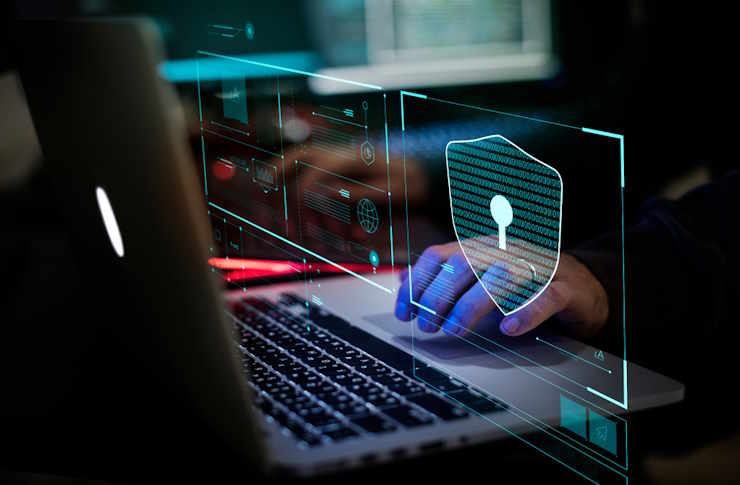Complete business protection: from modern computer threats to innovative future solutions
Cybersecurity has become a critical business necessity rather than an optional investment. Every day, companies face sophisticated digital threats that can compromise sensitive data, disrupt operations, and damage their reputation. Understanding cybersecurity fundamentals and implementing comprehensive protection strategies helps businesses safeguard their digital assets while maintaining customer trust and operational continuity in an increasingly connected world.

What is cybersecurity and why is it important for your business?
Cybersecurity encompasses the technologies, processes, and practices designed to protect networks, devices, programs, and data from attack, damage, or unauthorized access. For businesses, cybersecurity serves as a digital shield against financial losses, regulatory penalties, and reputational damage.
The importance of cybersecurity extends beyond technical protection. A single data breach can result in significant financial consequences, including direct costs for incident response, legal fees, regulatory fines, and lost business opportunities. Companies also face indirect costs such as decreased customer confidence, competitive disadvantage, and long-term reputation damage. Additionally, many industries have strict compliance requirements that mandate specific cybersecurity measures, making protection both a business necessity and legal obligation.
Modern businesses rely heavily on digital infrastructure, from customer databases and financial records to communication systems and operational technology. This digital dependence creates multiple attack vectors that cybercriminals can exploit, making comprehensive cybersecurity essential for business continuity and growth.
What are the main threats and how can you prevent them?
Today’s cyber threat landscape includes various sophisticated attack methods targeting businesses of all sizes. Malware represents one of the most common threats, encompassing viruses, ransomware, trojans, and spyware designed to infiltrate systems and steal or encrypt valuable data. Phishing attacks use deceptive emails, messages, or websites to trick employees into revealing sensitive information or installing malicious software.
Social engineering attacks manipulate human psychology to bypass technical security measures, often targeting employees through phone calls, emails, or in-person interactions. Insider threats pose significant risks when current or former employees, contractors, or business partners misuse their authorized access to company systems and data.
Prevention strategies require a multi-layered approach combining technology, processes, and employee education. Regular software updates and patch management eliminate known vulnerabilities that attackers commonly exploit. Strong access controls, including multi-factor authentication and role-based permissions, limit unauthorized system access. Employee training programs help staff recognize and respond appropriately to social engineering attempts and suspicious activities.
Network security measures such as firewalls, intrusion detection systems, and network segmentation create barriers against unauthorized access and lateral movement within company systems. Regular data backups ensure business continuity even if primary systems become compromised, while incident response planning helps organizations respond quickly and effectively to security breaches.
How to choose the perfect cybersecurity solution for your needs?
Selecting appropriate cybersecurity solutions requires careful assessment of business requirements, risk tolerance, and available resources. Start by conducting a comprehensive security assessment to identify current vulnerabilities, existing security measures, and potential attack vectors specific to your industry and business model.
Consider your company’s size, budget, and technical expertise when evaluating security solutions. Small businesses might benefit from managed security services that provide enterprise-level protection without requiring dedicated security staff, while larger organizations may need customized solutions with extensive integration capabilities.
Evaluate the scalability and flexibility of potential solutions to ensure they can grow with your business and adapt to changing threat landscapes. Look for solutions that offer comprehensive coverage across endpoints, networks, cloud environments, and mobile devices rather than point solutions that address only specific threats.
Integration capabilities play a crucial role in solution effectiveness. Choose security tools that work well with existing systems and provide centralized management and reporting capabilities. This integration reduces complexity, improves visibility, and enables more efficient security operations.
| Provider Name | Services Offered | Key Features | Cost Estimation |
|---|---|---|---|
| Norton Business | Endpoint protection, email security | Real-time threat detection, cloud management | $50-150 per device annually |
| Bitdefender GravityZone | Comprehensive business security | Advanced threat defense, centralized console | $30-80 per endpoint annually |
| Kaspersky Small Office Security | All-in-one security solution | Anti-malware, firewall, web protection | $150-300 for 5-25 devices annually |
| CrowdStrike Falcon | Cloud-native endpoint protection | AI-powered detection, threat hunting | $100-200 per endpoint annually |
Prices, rates, or cost estimates mentioned in this article are based on the latest available information but may change over time. Independent research is advised before making financial decisions.
Future cybersecurity solutions continue evolving to address emerging threats and technological advances. Artificial intelligence and machine learning increasingly power threat detection and response capabilities, enabling faster identification of sophisticated attacks and automated incident response. Zero-trust security models are becoming standard practice, requiring verification for every user and device attempting to access company resources regardless of their location or previous authentication status.
The cybersecurity landscape will likely see continued integration of cloud-based security services, providing businesses with scalable, cost-effective protection without significant infrastructure investments. As remote work becomes more prevalent, security solutions will need to provide seamless protection across diverse environments while maintaining user productivity and experience.
Investing in comprehensive cybersecurity protection represents a strategic business decision that supports long-term growth and sustainability. By understanding current threats, implementing appropriate prevention measures, and selecting suitable security solutions, businesses can protect their valuable digital assets while maintaining competitive advantage in an increasingly digital marketplace.




